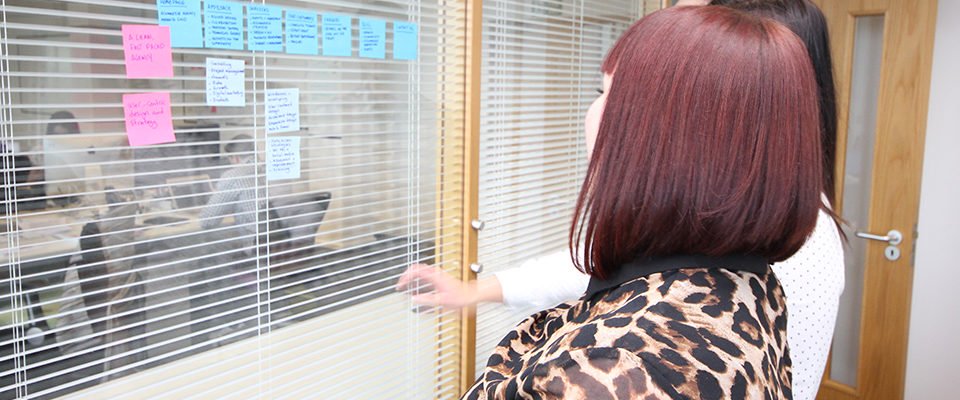
Discussing the Fundamentals of Effective UX Design
As Space 48 Creative Director, Anna Green is responsible for the design and UX (user experience) of our award-winning ecommerce websites. She communicates with customers, project managers and developers to deliver website designs with the user’s best interest at their root. Challenging the norm and pushing the boundaries of UX is all part of the day job for Anna. We caught up with her to discuss the fundamentals of effective UX design:
How long have you worked in ecommerce and UX design, and what experience did you have before this?
I have been a designer since 2004 and moved into web design and web development in 2008, when a new job offered to train me in development from scratch. Since then, I have worked with both lead generation and ecommerce websites including 5 years as Head of Web Design and Development at a digital agency in Brisbane.
I started out studying a general art and design course which covered a range of mediums such as audio visual, photography, graphic design, fashion, fine art and more. I enjoyed graphic design and fine art equally. I chose to make design my specialism because I love typography and it opened more career opportunities for me. I then went on to study graphic design and gain a degree in design and visual communications at Birmingham City University.
To be honest, initially web wasn’t an area that I wanted to go into, I found it intimidating and thought I would miss working with tangible design. But as the graphic design industry changed and designers were expected to be able to write HTML I figured that I better see what all the fuss was about. But since working with websites, I’ve never looked back!
What are the biggest cultural shifts and strategic changes you’ve seen in UX design on ecommerce stores over this period?
In 2008, UX wasn’t a thing. Web designers were either graphic designers who could build HTML or (more commonly) developers who found themselves designing websites.
Now UX is a specialism is its own right. This has been made possible by the huge range of tools that are now available for gathering different types of user research. It’s also now a necessity, as businesses become savvier about how they cater for their users. Anyone not looking at UX is going to be left behind.
What sets a UX designer apart from a web designer is the user research that they gather. All designers should be designing experiences for users, but it’s what they base their decision on that counts.
How does Space 48’s approach to UX design differ from other ecommerce website developers?
Not all ecommerce development agencies offer design, let alone UX services. UX is an iterative process and should be constantly reviewed within the lifecycle of a website.
Our UX process is a combination of fact-finding, observation, design and user testing. The goal is to gain an understanding of each customer’s website users and deliver a better experience to them based on our findings.
What do you feel are the fundamentals of effective UX design/key things to get right?
- Observe best practices (hierarchy, iconography, CTA language, expect behaviours/journeys)
- Use case vs edge case – design for your main audience and consider smaller side journeys for edge cases
- Mobile-first design
- User research – especially where you are considering something that is not standard. It can be easy to be overly optimistic about a new idea, but always check if your users want the new feature.
What do you find most rewarding about your job?
Seeing a design once it has been built and making a positive impact on things like customer loyalty, conversion, AOV and bounce rates. Also seeing customers excited about their designs once they are signed off and ready to go into the build, and receiving positive feedback regarding user experience.
How do you think that Magento 2 has changed the scope of UX and what are the key benefits of the platform from a design point of view?
One of the key improvements of Magento 2 is the streamlined checkout process. There are fewer steps for the user, with a minimalistic 2-step checkout rather than the traditional 5 steps. I’m also excited to see what the new integrated A/B testing tool is capable of.
It’s important to bear in mind that ecommerce isn’t a one size fits all and when doing a replatform it’s always best to assess the current site, what it’s doing well and what obvious improvements can be made. Initially going live with a largely similar site and then introduce user research and design iteration once the new platform is stable.
When you’re not working on ecommerce websites, what do you like to do to relax?
The majority of my spare time goes on my art, I draw and paint. I’m creative all of the time! My holidays are taken up by traveling to unusual places, and this year I’m looking forward to my trip to China.
Space 48 is a UK-based ecommerce consultancy, comprising of Magento specialists and Magento 2 developers. If you want to learn more about the benefits of replatforming your ecommerce store, download our free resource: A Guide to Replatforming.
Interested in improving your own UX?
{{cta(‘502b25a8-058c-412e-b58c-57f584d93c7b’)}}
